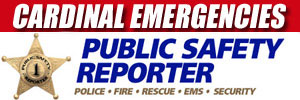When planning a cross-country road trip, there is a lot to think about and prepare for. While you’re probably more excited to plan which destinations you’ll visit and what activities you’ll do along the way, it’s important to give safety some careful consideration before heading out on the open road. To ensure that you have a safe and enjoyable trip, here are some essential safety tips when going on a cross-country road trip that you should follow.
Pull over when you’re tired
When driving for hours on end—especially early in the morning or late at night—the gentle rock of the car can start to lull you to sleep. If your eyelids start to get heavy while you’re driving, make sure to pull over immediately. Drowsy driving results in tens of thousands of injuries and deaths each year.
Even if you don’t fall asleep at the wheel, drowsiness can slow your reaction time and reduce your attention span. To avoid putting yourself and other drivers at risk, make sure to pull over and take a nap, drink something with caffeine, or find a place to stay and regain your energy if you start to get sleepy while driving. If you drink something with caffeine, and you’re planning a short nap at a rest area, you drink the caffeinated drink just before the nap, as it will be in effect when you wake up.
Make sure your vehicle is up for the journey
Another important safety tip when going on a cross-country road trip is to make sure your vehicle is up for the job. After all, you don’t want to end up stranded on the side of the road out in the middle of nowhere due to an unforeseen vehicle issue.
To make sure everything is working properly and in order, take your car in to a mechanic to check your fluid levels, brakes, and other components. Because you will be putting a lot of wear on your tires and will likely have to drive in strong winds and rain at some point, it’s a good idea to replace old tires with new ones that have better traction.
In addition to ensuring that your vehicle is in tip-top shape, you should also check to make sure you have jumper cables, extra wiper fluid, a fully inflated spare tire, and roadside signals, such as LED Road Flares, just in case.
Know how to handle a roadside emergency
Nobody likes to consider worst-case scenarios when planning a fun, cross-country road trip. However, failing to prepare for adverse circumstances could be dangerous if a mechanical failure or maintenance issue becomes a reality.
It is best to learn how to handle a roadside emergency, such as an accident, car malfunction, or medical issue before it occurs, rather than in the moment when stress levels are high. Be very cautious when you are outside your vehicle. Depending on where your vehicle is stopped, you may have to make a decision whether it is safer to stay inside your vehicle or get outside to check or place road signals only during a break in traffic. Avoid leaving yourself vulnerable to an impaired driver or careless driver that might be passing by.
If an emergency occurs while you’re on the road, do your best not to panic. Remain calm and try to get your vehicle off the road—either onto the shoulder, into a rest station, or into a parking lot—where you are safe from oncoming or passing traffic. Then, cautiously exit the vehicle so that you can assess the situation and call for help if necessary.
facebook …
GET ALERTS on Facebook.com/CardinalEmergencies
GET ALERTS on Facebook.com/ArlingtonCardinal
Stay informed with news from PublicSafetyReporter.com’s Emergencies Behind the Scenes Facebook page — Facebook.com/CardinalEmergencies.
facebook …
GET ALERTS on Facebook.com/CardinalEmergencies
GET ALERTS on Facebook.com/ArlingtonCardinal
Stay informed with news from PublicSafetyReporter.com’s Emergencies Behind the Scenes Facebook page — Facebook.com/CardinalEmergencies.

